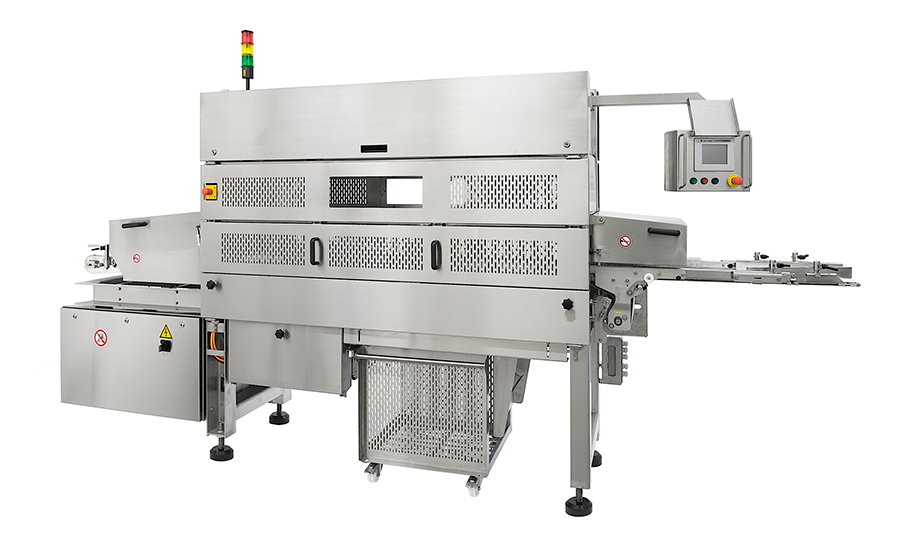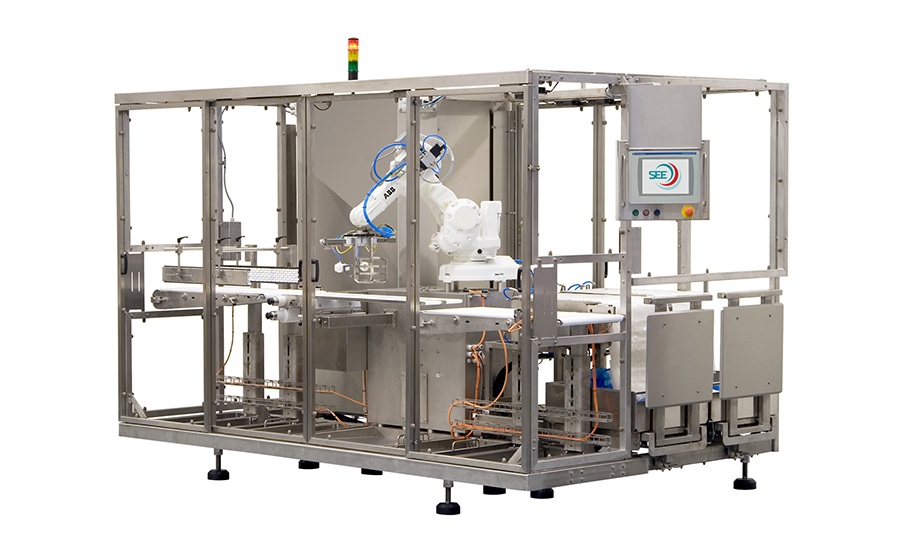How Automation Will Bring Predictability Back to Your Business
Automation can change the way the industry operates by changing how we address and respond to challenges.

Automated solutions, like the CRYOVAC AutoVac 86, are revolutionizing the way businesses operate. Image courtesy of Sealed Air
What if your food processing plant ran with the same performance qualities you expect to find in a high-precision watch? Your fine timepiece runs at a stable rate, day in and day out. You can count on it keeping time and being there for you when you need it. It performs exactly as you expect, no surprises, no flaws. It’s precise, predictable and reliable.
Now, imagine these attributes apply to your business. Your current operational challenges aren’t challenges anymore, and your plant is humming along efficiently and sustainably. Employees are productive and fulfilled, and you have the right people in the right positions, all the time.
Furthermore, you have all the data you need, where you need it and when you need it. If there is an equipment issue, the issue is diagnosed quickly and repaired cost-effectively, thanks to remote diagnostics and your access to the experts who provide insights and solutions. Potential issues are identified and solved before they have the chance to become problems. Bottom line is, your business runs like a well-oiled machine, predictably and immune to the chaos of influences beyond your control.
Sounds a little like an alternate reality, doesn’t it? But it’s all possible with touchless automation.

Touchless automation systems already are revolutionizing the way businesses operate, bringing things back into order, providing predictability and efficiency. An automated environment provides the ability to maximize safety, increase worker satisfaction, minimize waste, protect goods and deliver productivity savings. In other words, machine intelligence optimizes performance and create the highest levels of productivity, while ensuring the most profitable outcome.
For meat processors who are striving to bring predictability back to their business, the future of their business may rely heavily on how they incorporate automation into their operations.
What Automation Means for You
While automation may bring to mind thoughts of faster machines and fewer people on the line, it’s about much, much more.
Automation is about a commitment to a successful future, one that promotes the optimization of your labor force, the power of connectivity and better insights, and the predictability that comes from a totally integrated solution.
Let’s take a closer look into this solution for success:
-
Labor optimization. Not labor reduction. Automation is about removing the uncertainty of day-to-day operations. It allows you to optimize the labor you have, while combatting labor turnover costs and minimizing disruption that can occur from daily unexpected labor shortages.
With an automated environment, new employees are trained and become productive quicker, and existing employees will find more satisfaction in their jobs. From the plant manager to a production line worker, automation will make their jobs more rewarding, more efficient and safer.
For example, a fully automated production line will allow one employee, who formerly filled bags or performed other mundane tasks, to become a production line manager, overseeing all aspects of the line as the automated system loads the bags, fills the bags, and then advances to rotary chambers for vacuum and sealing.
At the same time, the plant manager, who in the past spent a great deal of time gathering and calculating information from the plant floor, now has an entirely new visualization with the data produced from an automated system and can spend time understanding and using the information rather than trying to gather it.
And with a touchless automation system, not only does it mean fewer people will need to touch the product, making the process faster and more efficient, it also creates a more sanitary and safer environment, especially important where food quality and safety are concerned.
Overall, with automation, a business can use its people to their greatest advantage and strengths and leave the mundane work to the robots.

-
The power of connectivity. Remote connectivity allows service technicians to leverage data to provide better insights and enable continuous improvement to line performance. This helps reduce downtime, allows you to quickly detect problems to prevent huge repairs later, extends equipment service life and reduces overtime costs.
Imagine a piece of equipment suddenly has a problem, and rather than spending a lot of time trying to diagnose the problem and perhaps going through 20 or more fixes before you get at the root of the problem, you have all the data and expertise at your fingertips to fix the problem quickly and cost-effectively through remote connectivity.
These insights also help predict when things are going to fail, so problems can be solved before they happen. This type of predictive maintenance is yet another way to bring predictability back to business.
Connectivity and the insights it provides also helps to ensure the highest product integrity, delivering a consistent result, protecting your brand reputation and adding to customer satisfaction when they purchase your products.
Additionally, connecting to machines with advanced features is easier. They offer a simplified learning path, are more ergonomic and are ultimately safer for employees.
-
Predictability with a totally integrated solution. Packaging automation has become every bit as much about protecting production as it is enhancing it. It’s about reducing risk and finding a way to ensure your operation runs regardless of who does or does not show up for work that day. It’s about bringing predictability back to your plant by creating an environment that’s safe, flexible, and less dependent on restricted or uncertain resources.
And it goes beyond the package. When you think about automation, and the predictability that it brings, think about the entire production process… from the time the product arrives at the plant to the time it is put on the truck for delivery.
For example, automation goes both upstream and downstream of the packaging process. The integration of vision systems augmented with machine learning can help to identify, sort and find visual defects on each product as it goes through the process. This type of product traceability system helps ensure the optimal performance of automation equipment throughout the process.
A Holistic Approach to Automation
Think about automation as a commitment to a better tomorrow, and a commitment to your business.
Investing in automation, Internet of things (IoT), artificial intelligence and other advanced technologies can help you make smarter, faster and more proactive decisions about your operations to help maximize labor efficiency and productivity while minimizing downtime and reducing total operating costs.
And remember that automation goes beyond packaging to include the entire production process. Automated solutions such as automated cartoning systems, infeeds, conveyors, shrink wrappers and shrink tunnels are designed to dramatically shorten the packaging process by automating repetitive tasks such as lifting, turning, loading and sealing.
For the right solution you’ll want to consider the total system, the scale of operation and the range of complexity. From setup to post-installation to maintenance, automation requires a multifaceted approach. It’s not a one-size fits all endeavor.
Automation can change the way the industry operates by changing how we address and respond to challenges. Touchless automated solutions are designed to bring consistency and predictability back to businesses and control back to our customers.
With packaging automation, we can reduce chaos and find the way forward to a better and more predictable future.
Looking for a reprint of this article?
From high-res PDFs to custom plaques, order your copy today!






